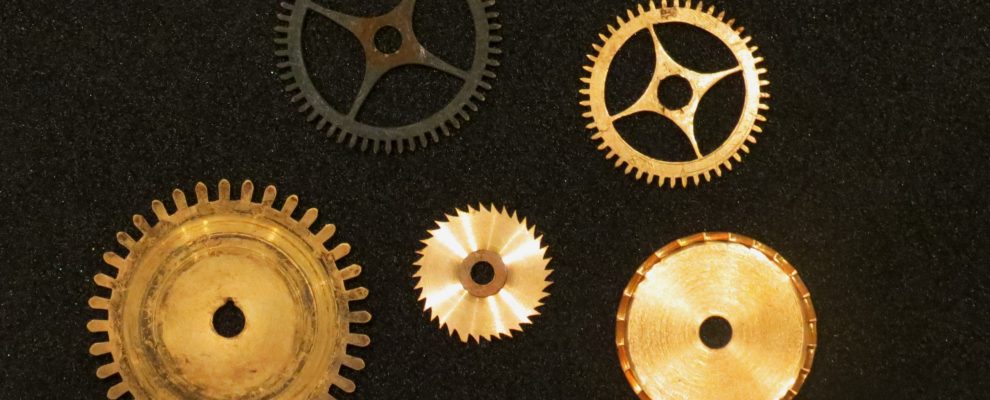Specialised tools were absolutely essential to the clockmaker in creating all the complex parts that a clock contained. Whereas many of the old provincial clockmakers may very well have made their own tools and many of the parts of their clocks themselves, their later Georgian successors took advantage of buying in skills such as engraving and painted work for the dial, and used ready-made stock parts and decorative elements such as hands, spandrel castings, dials and finial decorations for cases. These would come from specialist craftsmen, known as chamber masters, who made one particular component in large quantities. This is why identical spandrel castings, for example, can be found on clocks produced by different makers working in widely separated parts of the country.
This increasing use of external skills and components did not change the fact that any clockmaker still required a range of specialist tools to produce the many parts that formed the movement. The centre of tool making in England was Lancashire, with the Liverpool area in particular becoming famous for the quality of the clockmaking tools, machines, files and even basic clock parts manufactured there. It is thus very likely that Lancashire-produced equipment would have been found in many a Yorkshire clockmaker’s workshop. The Liverpool partnership of John Wyke and Thomas Green was particularly successful in this field, and the fully illustrated Catalogue of Tools for Watch and Clock Makers produced by Wyke & Green from the 1750s to the 1770s, from which clockmakers could order tools and parts, represents one of the first examples of a commercial mail order operation.
Wheel engines, such as this example by Thomas Green of Liverpool, were absolutely essential equipment for any clockmaker. Wheels of varying sizes were a basic component of any clock movement with a number of them being required for any one clock. Wheel engines, substantial machines with their cast-iron frames which sat firmly on a bench, would enable the maker to produce nearly any size of wheel with any combination of teeth that he cared to make.
The large circular brass division plate drilled with 35 concentric rings numbered from 30 to 365 gives a selection of teeth with numbers at the centre and in a column, allowing the maker to calculate which ring to use. The numbers of the holes do not increase by regular intervals but are sizes most used by clockmakers: numbers 78 and 84 for example are needed for great wheels of a longcase clock, while 30 is the number of teeth cut on most escape wheels. Inserting a blank circle of brass on the arbour above the dividing plate, the maker would keep advancing the division plate to the next hole and cut a tooth with the fly cutter driven by a belt connected to a large hand cranked wheel. Even producing one wheel in this way was slow, repetitious yet meticulous work, and the process of creating all the parts needed for each clock was indeed a complex, laborious but highly skilled occupation.
(From Keeping Time a temporary exhibition at Fairfax House, 5th October-31st December 2012)

Name: Hannah Phillip
Title: Director
Source: Keeping Time (Fairfax House, 2012)
